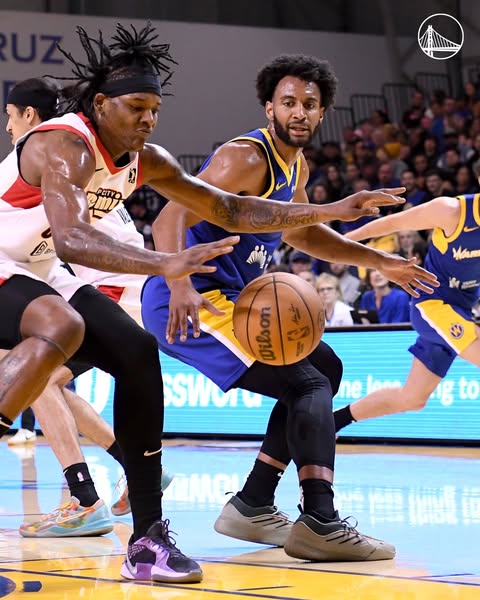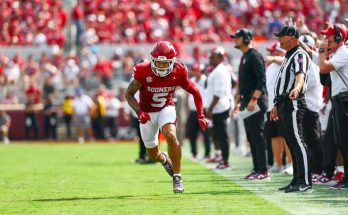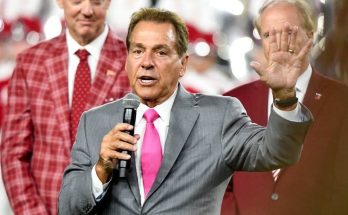Braxton Key’s journey this past season has unfolded like a storybook breakthrough. From G League standout to NBA playoff rosters, his ascent has been both electric and emblematic of relentless determination. In the shadows of two-way contracts and Summer League tryouts, Key has emerged as a defensive disruptor, transitional playmaker, and gritty contributor for a championship-caliber team. His story is not just about personal triumph—it’s about illustrating how resilience, skill, and opportunity converge to redefine a player’s path.
Key began the season with a San Diego Clippers G League stint that would rewrite his career arc. Over 38 appearances, the 6-foot-8 forward averaged a robust 14.8 points, 8.6 rebounds, 4.3 assists, 2.4 steals, and 1.1 blocks per contest, while shooting efficiently—49.1% from the field. These numbers aren’t just stats; they reflect a player evolving into a two-way powerhouse. His steal rate led the G League at 2.6 per game, and his shot-blocking presence hinted at forward versatility. These performances earned him Defensive Player of the Year honors in the G League for 2024–25, and a spot on the All-Defensive Team—no small feat.
Reddit G League observers marveled at his elite-level productivity. One fan noted after a Santa Cruz performance: “He’s been a tremendous fit… definitely worthy of his title as best wing defender in the G League”. Another emphasized his relentless defensive effort: “Holy cow 66 from the field and 64 from 3 while averaging 23?? 4.2 spg??? ”. And after a 22.5‑point, 9.9‑rebound, 3.4‑steal campaign over 11 games, another fan remarked how Key “continues to press his case for the Warriors’ last roster spot”. The admiration wasn’t just about athleticism—it was respect for his impact across multiple aspects of the game.
It wasn’t all G League flash for the 28‑year‑old. Key’s Summer League stints with Detroit in 2022 and Dallas in 2023 were previews of his readiness. In Las Vegas with Detroit, he logged stat lines like 11 points, 7 rebounds, 4 steals, and 2 blocks in one game—and followed up with 14 points on 6-for-8 shooting in another. For Dallas, he etched a highlight-reel summer moment—a block-turned putback dunk to win a game in overtime. These sparks hinted that he belonged among long-term rotational players in the NBA.
Yet, for all the promise, Key’s NBA trail has required grit. Starting his professional journey undrafted in 2020, he bounced between the Delaware Blue Coats, 76ers, Pistons, Nuggets, and Clippers. With the Blue Coats, he posted 14.8 points, 6.1 boards, 2.9 assists, 1.8 steals, and 1.3 blocks per game. His time in Philadelphia yielded brief 10‑day windows; in Detroit’s front office, his hustle on both ends left a mark: “I can guard 1‑through‑5,” he told reporters, embracing the versatility identity. Critics tagged him “a poor man’s Matisse Thybulle,” mauling passing lanes in the G League.
By July 2023, Key had secured a two-way deal with Denver after impressive summer showings. Then October saw tryouts with the Clippers and return to San Diego’s G League system. The push-and-pull of NBA and G League underscored his resilience; every waiver became an opportunity for growth.
His breakthrough finally arrived in March 2025 when Golden State claimed him on a two-way contract. The Warriors opened the slot by converting Pat Spencer’s deal, letting Key step onto the NBA stage—a stage stacked with Hall-of-Famers and championship pedigree. His G League metrics mirrored the archetypal Draymond Green model: defensive anchor, rebounder, occasional playmaker. While outside shooting (about 20% from three) remained a concern, his 7‑foot wingspan, rebound instincts, and disruptive defense were immediately apparent.
Golden State’s coaching staff took note. Steve Kerr praised Key’s defensive readiness, saying G League scouts described him as “NBA-quality”. Such confidence isn’t given lightly from a championship organization. The move paid off quickly: on April 13, the Warriors converted his two-way contract into a standard NBA contract, making him eligible for postseason play. It was validation—proof that his strong, consistent G League play had met the NBA’s threshold.
His NBA stat line—3.7 minutes per game over three appearances for Golden State—might seem modest, but the deeper impact is subtler. His presence in practice elevates defense and boards rebounding practice, while his energy in garbage minutes translates to team momentum. A player like Key brings tactical flexibility: switch-heavy defense, length at the wing, and baseline rebounding to shore up minutes against teams with physical wings or pick-and-roll threats.
When playoff rosters were locked, Key was on the Warriors’ books—not as a symbolic gesture, but as a choice to invest in his skill set. It marked a full-circle moment: from college standout (SEC Freshman Team, 2019 NCAA Championship at Virginia) to long-simmering G League star to NBA postseason roster. He joins the exclusive group of two-way promotions to NBA rotations this year, alongside Pat Spencer, Quinten Post, Kevin Knox, and Jackson Rowe.
His underlying profile is compelling. In college, he averaged 9.9 points, 7.4 rebounds, and 1.8 assists per game in his senior year at Virginia. Now, he’s replicated that versatility professionally. His 2024–25 G League campaign with San Diego saw 50.5% shooting overall, 2.9 steals, and 4.3 assists per game. Reddit discussions reinforced that this was more than stats—fans described him as “tremendous fit,” “best wing defender,” and “could crack the NBA 15th man”. That sentiment crescendoed when the Warriors awarded him a floor-15 opportunity.
What’s striking is how Key has continually risen to new occasions. Each setback—from going undrafted to multiple waivers—became a pivot point. His G League Defensive Player of the Year award is significant, but even more telling is the way those performances were curated: he’s been consistently household among scouts and Reddit forums alike, lauded not just for singular stats but for his all-around game—defensive rotations, rebounding amid chaos, smart switches, mental poise. Observers likened him to a mix of Draymond, Kyle Anderson, Larry Nance-type wings—towering defenders who rebound, pass, and anchor second-unit units.
This season, the G League’s advanced metrics also reinforced his impact. One source noted his Defensive Win Shares ranked eighth in the league. His 2024‑25 numbers with Santa Cruz averaged 22.5 points, 9.9 rebounds, 3.9 assists, 3.4 steals on 55.4% shooting and over 45% from three across 11 games. These splits confirmed he wasn’t just slashing against lesser arms—he was refining a two-way profile: efficient, versatile, and physically imposing.
Golden State’s staff clearly saw the value. Converting his deal in April signaled serious intent. Coach Kerr’s early public endorsement—calling him “NBA-ready” on defense—underscored the trust. In a postseason that prizes matchups, defensive switches, and bench hustle, Key brings attributes coaches covet: rebounding, switchability, hustle defense.
His playoff role may be deeply strategic: 4th quarter defense, switch-heavy coverages on opposing wings, spacing for shooters, and energy off the bench. Even with limited minutes, his presence loosens rotations and offers insurance against foul troubles for starters. For a team like Golden State, built on length and pace, a player like Key fits seamlessly into the systemic design.
Beyond the box scores, there’s a human story. The nephew of former NBA star Ralph Sampson, Key’s development from a Deerfield Academy state champion to NCAA champ at Virginia set a foundation of winning pedigree. Yet, for years he was in limbo—on the fringes, improving, awaiting the call. Now, after years in Delaware, Detroit, Denver, San Diego, he’s on a championship roster, with real NBA minutes and a postseason roster spot.
At age 28, he’s living proof that the path isn’t always linear. There were contract waivers, G League assignments, international stints, but also awards: G League Defensive Player of the Year, multiple All-Defensive selections, an All-NBA G League Second Team nod, and a G League championship in 2023. Those accolades are markers of a player who didn’t just persist—he improved, learned, adjusted.
The final piece is mental: Reddit fans expressed that Key had “been cooking,” “could crack the NBA,” and was “too good for the G League”—comments that range from excitement to respect. For Key, confidence is key, but so is humility. He’s never been a loud-talker—just a do-it-all wing who defends, rebounds, makes smart passes, and moves continuously off the ball. That unassuming profile might be his greatest NBA asset: an understated glue-guy who gives coaches flexibility.
So what lies ahead? If Key delivers sound defense, board-thumping, and occasional hustle buckets in limited minutes this postseason, he’s positioned to earn more playing time, possibly a two-year team option, or a full roster spot next season. And even beyond personal gain, his role could matter greatly for the Warriors—where matchups against potent wings and backcourt threats demand length and activity off the bench.
Braxton Key’s breakout year is more than a breakout—it’s a blueprint. It’s perseverance in the G League, Summer League showings, corporate NBA tenures, and playoff rotations all lining up. It’s about a defensive profile translating from developmental circuits to pros. It’s about a Philadelphia practice squad player becoming an NBA playoff participant. And it’s about a basketball life defined by steady climb rather than flash.
As the Warriors navigate any playoff series, Key’s presence will be quietly impactful—whether in practice prep or minute-long segments. His story will inspire G League players, show the value of defensive versatility, and underline that the NBA brass still reward hard, methodical improvement. In a league enamored with stars, Key’s rise emphasizes the potency of grit.
In sum, Braxton Key didn’t merely break through—he shattered ceilings. From standout on Santa Cruz to NBA playoff roster occupant, his defense-first versatility, rebounding tenacity, and length at the wing make him a rare find. For Golden State, he’s a smart addition; for fans, he’s an underdog gone pro; for G League hopefuls, he’s evidence that every game, every assignment, every hustle play counts. His story this season proves that champions are built not just at the top, but patiently erected from the ground up, layer by purposeful layer.



